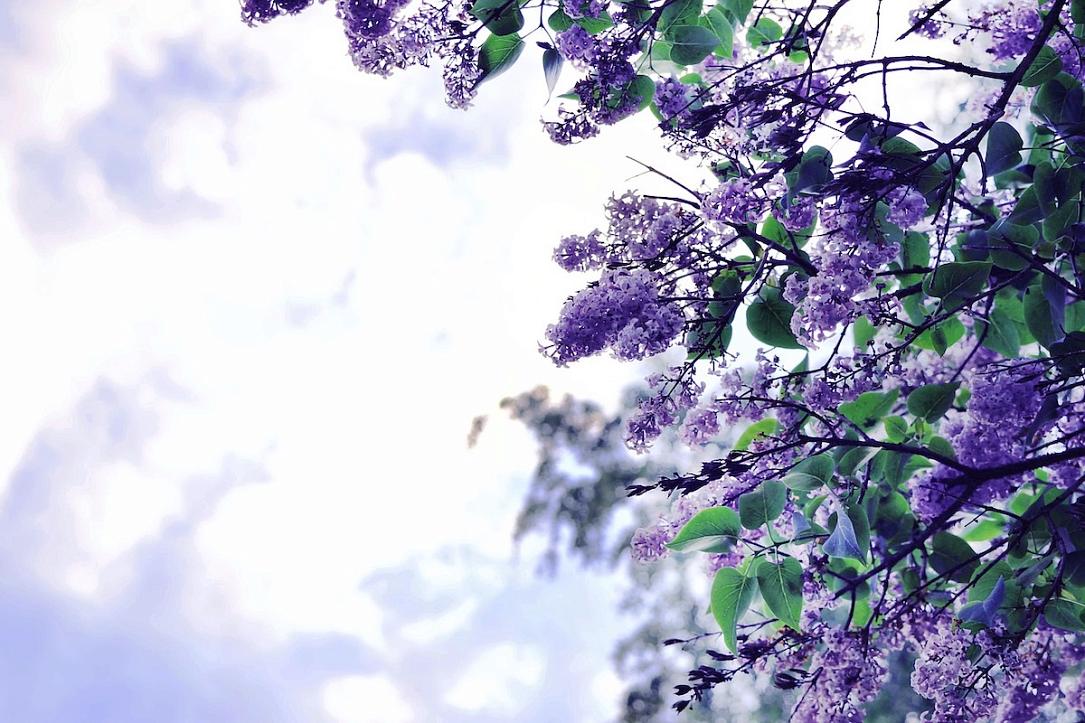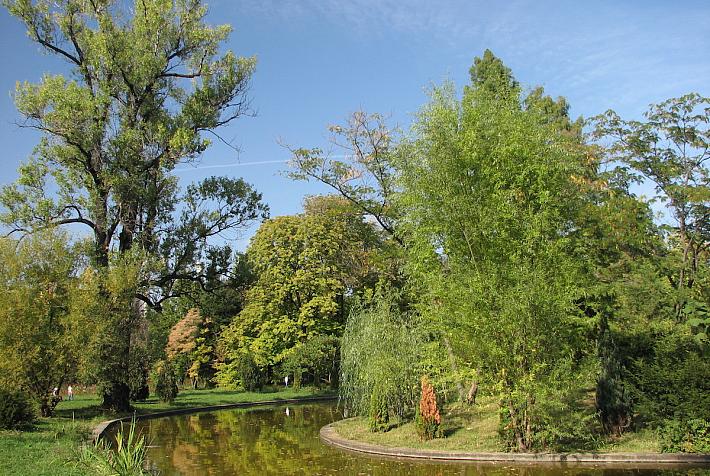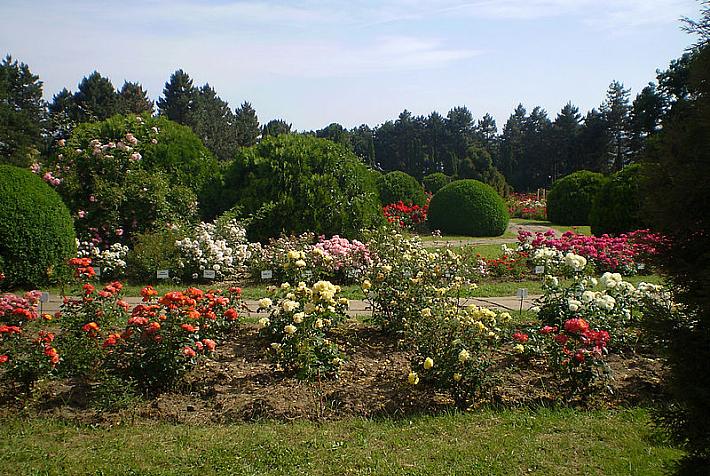Getting in the mood for spring: Botanical gardens to visit in Romania

Although winter is still present in some parts of Romania, spring is just around the corner, eager to bring nature back to life. And the botanical gardens, which are usually right in the middle of large cities, are among the best places to welcome spring.
Botanical gardens are often seen as green retreats from the busy city life, and that’s more than true. But they are also perfect for relaxing walks in the warm months, offering visitors front seats to the amazing show of spring colors. Find below a list of some of the most beautiful botanical gardens in Romania:
Dimitrie Brândză Botanical Garden in Bucharest
Located in one of the most beautiful neighborhoods of Bucharest, the Cotroceni neighborhood, this botanical garden is one of the best choices for those who want to take a break from the busy and crowded life of the capital city and connect with nature.
The Botanical Garden in Bucharest was founded in 1860 at the initiative of Carol Davila, the famous Romanian doctor and forefather of the Romanian medical university education. However, it is named after its founder – Romanian botanist Dimitrie Brândză.
Its 18.2 hectares are divided into several sectors (both indoors and outdoors), such as the outdoor sectors dedicated to decorative plants, rare plants or Mediterranean plants, the Italian Garden and Dobrogea’s Flora, the rose garden and the Grandmother’s Garden sector. But visitors can also enjoy indoor spaces such as the 2,500-sqm exhibition greenhouse, which hosts plants originating in tropical, subtropical and equatorial areas, or the old greenhouse.
Those who want to visit the outdoor spaces have to pay an entry ticket of RON 7 in the period mid-March – mid-October. Entry at the Botanical Museum costs RON 2 while the entry ticket for the greenhouses costs RON 3.
How to get there:
The Botanical Garden is located at 32 Cotroceni road, close to the Cotroceni Palace.
Other places in Bucharest that are worth visiting are the Vacaresti Nature Park, the place also known as Bucharest’s delta, Cismigiu Park and King Michael I (Herastrau) Park.
Anastasie Fătu Botanical Garden in Iasi
This is the first Romanian university botanical garden and at the same time the largest in the country, being home to many species of plants from various regions around the world. Founded in 1856, the botanical garden in the Eastern Romania city of Iasi is also named after its founder – Romanian physician and naturalist Anastasie Fătu.
At present, it covers almost 90 hectares, being organized in 10 departments: Systematic, Phytogeographic, the Greenhouse Complex, Flora and Vegetation of Romania, the Forest steppe of Moldova, Biological, Useful Plants, the Dendrologic Section, the Ornamental Section, and Rosary. Those visiting the garden in February-August can admire a wide variety of plants, including collections of azaleas, camellias, orchids, crotons, cactus, bonsai, tulips, irises, daffodils, and roses. It also has a special section dedicated to sightless people, where plant species rich in volatiles are presented together with descriptions in Braille alphabet, according to information on the website of the Alexandru Ioan Cuza University, which maintains the garden.
The botanical garden’s greenhouses are closed on Mondays and Wednesdays but the outdoor areas can be visited daily starting 09:00. Entry costs RON 5.
How to get there:
The Botanical Garden in Iasi is located in the Copou neighborhood, at 7-9 Dumbrava Rosie street.
Alexandru Borza Botanical Garden in Cluj-Napoca
One of Romania’s most beautiful cities, Cluj-Napoca, also hosts one of the most beautiful botanical gardens in Romania, named after botanist Alexandru Borza.
Established in 1920 and officially opened to the public in 1925, this garden is not only a tourist destination but also serves as a teaching and research center as part of the Babeș-Bolyai University. It covers 14 hectares and hosts plants from different continents. Around 10,000 specific categories are cultivated here, grouped into several sectors: ornamental, phytogeographic, systematic, economic, greenhouses complex, and the sector destined for persons with sight deficiencies.
In addition to the beautiful flowers in the ornamental sector (such as tulips, daffodils, hyacinths, dahlias) visitors can also discover plants specific to different local and international geographical regions in specially arranged areas such as the Japanese Garden or the ones dedicated to the Transylvanian plain and plateau, the vegetation of the Carpathians Mountains and the Black Sea coast. Meanwhile, the Greenhouse Complex consists of six sections: the aquarium greenhouse, the palm trees greenhouse, the Mediterranean and Australian plants greenhouse, the succulent plants greenhouse, the Bromeliaceae greenhouse, and the orchids and ferns greenhouse.
The greenhouses are closed the first Monday of every month but visitors can enjoy the garden every day of the week starting 08:00.
How to get there:
The Botanical Garden is located close to the city center, at 42 Republicii street.
Vasile Fati Botanical Garden in Jibou
Similar to the other botanical gardens, this one is also named after its founder – professor Vasile Fati. It is one of the main tourist attractions of Jibou, a town located at some 88 km from Cluj-Napoca, in Salaj county, offering visitors the chance to relax in a place full of colorful flowers and plants.
The works for the organization of the Vasile Fati Botanical Garden began between 1959 and 1968, when biology teacher Vasile Fati, together with students and other teachers, manages to prove that the park surrounding the Wesselenyi castle, where the high school operated, is suitable for the arrangement of a botanical garden. It currently covers 25 hectares inside the architectural ensemble at the medieval castle that was the residence of the Wesselenyi family.
The Botanical Garden’s collections comprise over 5,000 plant species from various geographical areas of the world. The garden is organized by sectors, with each of them presenting a different collection of plants: there is the greenhouse complex, the micro production and research sector, the ornamental sector, an aquarium complex, a zoo park, and the beautiful Japanese garden. There is also a sector dedicated to roses and an area where the plants from the main mountain groups are presented.
How to get there:
This beautiful garden can be found at 11 Parcului street in Jibou, not far from the town hall.
Pavel Covaci Botanical Garden in Macea
The small commune of Macea, located at about 23 km from Arad, is home to one of the most beautiful botanical gardens in Romania – the Pavel Covaci Botanical Garden. Moreover, visitors can also spot the elegant Csernovics Castle during their walk in the Macea garden.
The botanical garden in Macea covers a surface of 21.5 hectares and was named after professor Pavel Covaci in 2010. There are several sectors arranged in the garden that attract the visitors, such as the one dedicated to the plants specific to the mountain and alpine areas, where people can admire various plants such as the edelweiss, the alpine aster, and the dwarf mountain pine. But there is also the sector dedicated to ornamental plants, the collections of toxic, medicinal and aromatic plants, and the area dedicated to roses.
The garden’s main alley is bordered by boxwood hedges and Japanese cherries with pink flowers that open in April-May, making the place perfect for a relaxing spring walk. Here and there the path is interrupted by rounds of flowers.
How to get there:
It's not difficult to find the garden once you arrive in the Macea commune, as the botanical garden and the Csernovics Castle are the main attractions of this small community.
Alexandru Buia Botanical Garden in Craiova
The botanical garden in Craiova is definitely one of the city’s special places that tourists should not avoid. Functioning under the management of the University of Craiova, this garden was founded on the initiative and under the guidance of professor Alexandru Buia in 1952, as a scientific, didactic and educational institution.
Nowadays, this green oasis located on about 13 hectares not far from the city center welcomes thousands of visitors every year, attracted by more than 6000 species of plants and shrubs, but also by the beauty of rare flowers. Similar to other botanical gardens, this one is also split into several sectors, such as the ornamental sector, the Floristic provinces of Romania and the Floristic provinces of the world sectors, the greenhouse complex, the roses sector, the museum, and the herbarium. And the explosion of colors specific to the spring season makes the experience even more memorable.
How to get there:
The Botanical Garden is located at 26 Constantin Lecca street, in the South-West part of Craiova.
newsroom@romania-insider.com
(Opening photo: Pixabay.com)


















